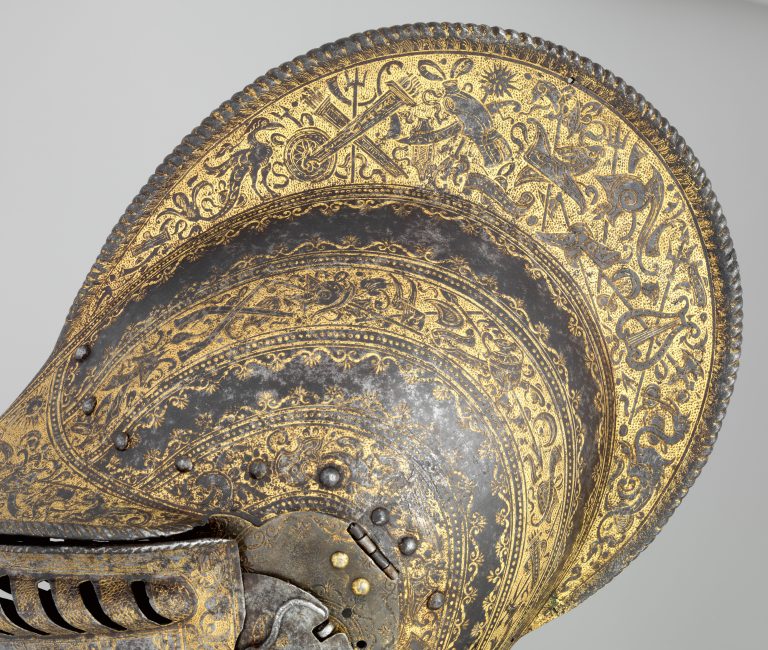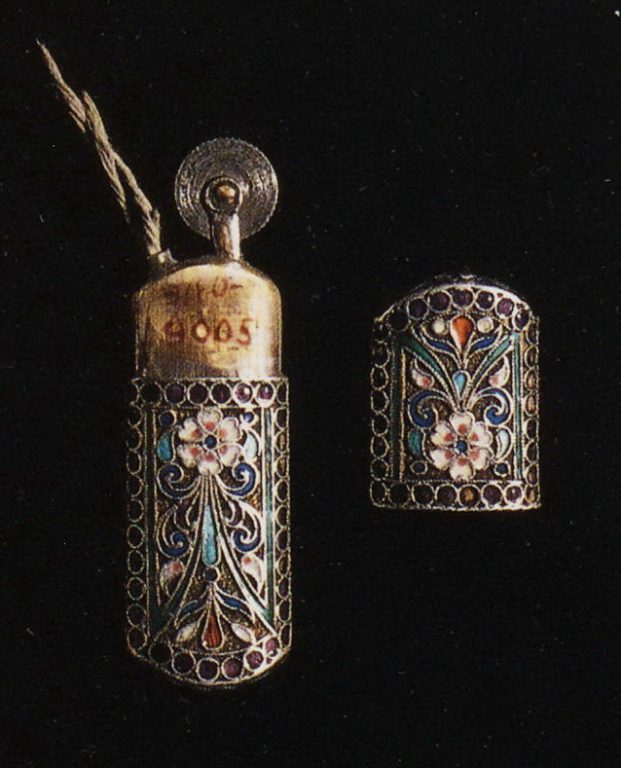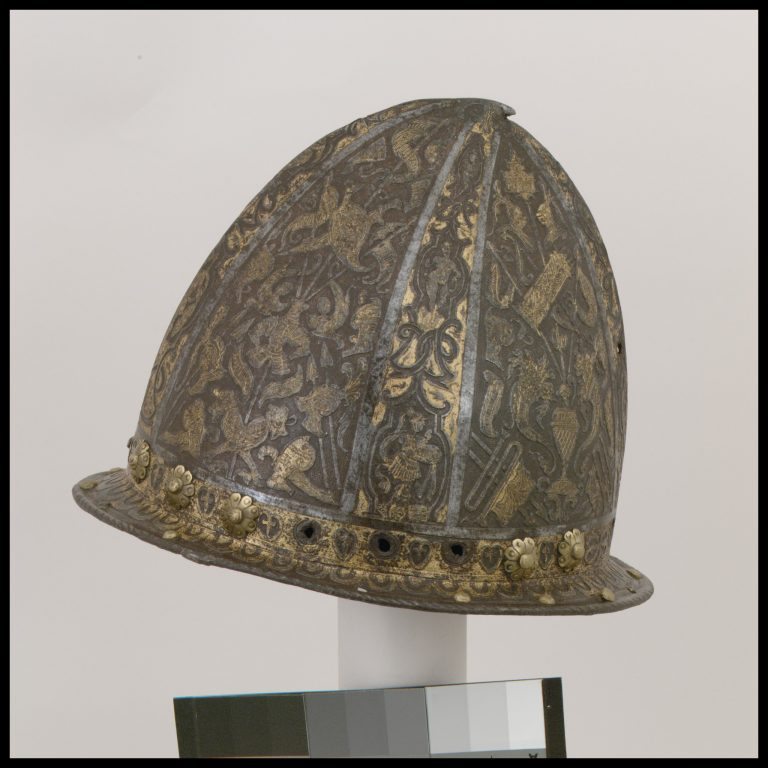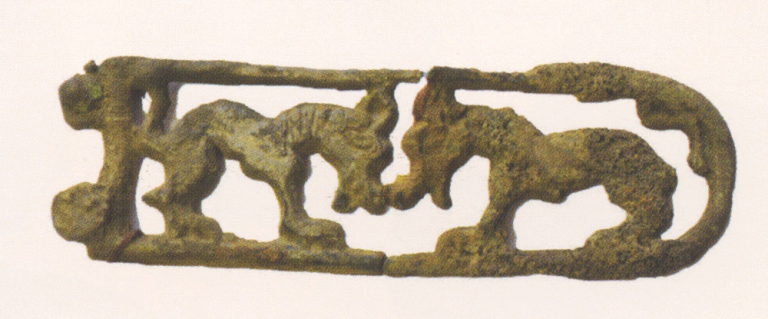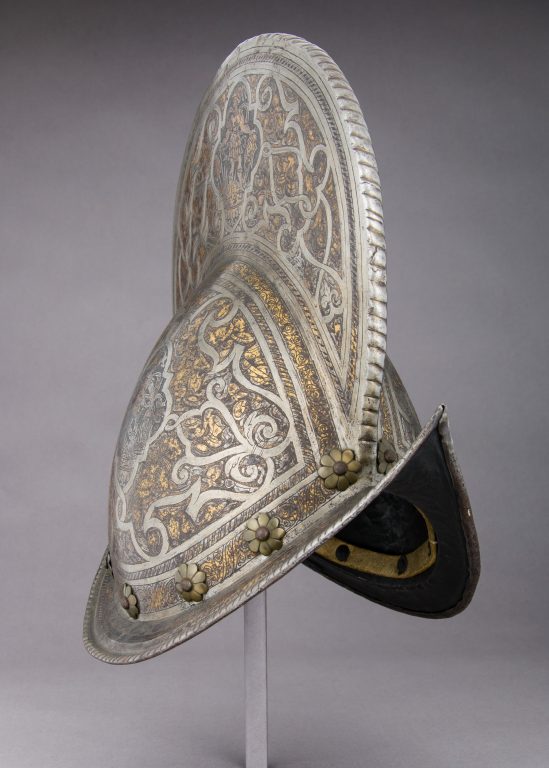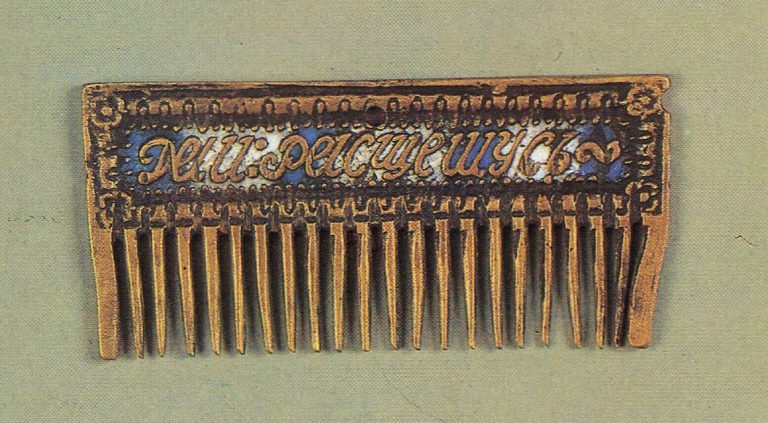

Italy
-
Objectarmor: Cantle plate
-
Type of arts & crafts
-
MediumSteel, gold
-
SizeH. 6 1/2 in. (16.5 cm); W. 19 1/2 in. (49.5 cm); Wt. 2 lb. 8 oz. (1.13 kg)
-
Geography detailsCountry of Origin
Town Possibly Milan,
Italy -
Country today
-
Dateca. 1550-60
-
CultureItalian, possibly Milan
-
Type of sourceDatabase “Metropolitan Museum of Art”
-
Fund that the source refers toMetropolitan Museum of Art
-
This cantle plate is distinguished by its very unusual etched decoration, featuring five emblematic scenes in rondels, each of which is surronded by a motto in Spanish. Between the rondels there are cartouches filled with symmetrical arabesque patterns. The border at the top edge consists of a sunken band etched with an undulating leafy vine on a dotted ground. The etched decoration was formerly gilt, and faint traces of gilding survive. The emblems and mottoes are taken from Los emblemas de Alciato traducidos in rhimas españolas (Lyons, 1549), the first Spanish edition of the widely influential emblem books of Andrea Alciato (1492–1550). Alciato (also known as Andreus Alciatus) was a renowned Italian humanist and professor of law who enjoyed the patronage of Pope Leo X and King Francis I of France and held prestigious teaching posts in Avignon, Bourges, Pavia, Bologna, and Ferrara. The following emblems and mottoes from Alciato’s works were adapted for use on the cantle (from left to right):
Emblem: Mark Antony sits in a chariot drawn by two lions (Alciatus no. 29). Motto: Que aun ferocissimos se doman (Even the most fierce are conquered). A cartouche suspended from and framed by ribbons bears the letters MA A and at the base of the rondel are the letters M ANT, both alluding to Mark Antony.
Emblem: A dozing Hercules is menaced by a troop of Pygmies (Alciatus no. 58). Motto: Contra los que à mas que sus fuerças bastan se atreven (Against those who dare beyond their powers). The cartouche in the rondel is inscribed ALCH, probably for Alcides, which is Spanish for Hercules.
Emblem: Bellerophon seated upon Pegasus thrusts his lance at the Chimera (Alciatus no. 14). Motto: Que con consejo se vençen los mas fuertes y engañadores (The stronger and the deceivers are overcome by determination). At the base of the rondel are the letters BAOROF, presumably for Bellerophon.
Emblem: Hercules leads a group of prisoners by light chains stretching from his mouth to their ears (Alciatus no. 181). Motto: Que mas puede la eloquençia que la fortaleza (Eloquence achieves more than strength).
Emblem: A man sits atop an elephant, guiding it by a tether attached to its trunk, while two armored figures follow behind holding military trophies aloft (Alciatus no. 177). Motto: La paz (Peace).
The use of figural scenes within large rondels of this kind was fashionable in Italian armor decoration from about 1510 to about 1530. The dotted background of the leafy border is a style that came into use in the second quarter of the sixteenth century. These factors, coupled with the 1549 publication date of the Spanish edition of Alciato, suggest that the Museum’s cantle plate was made around midcentury, possibly for a Spanish nobleman serving in Italy.






